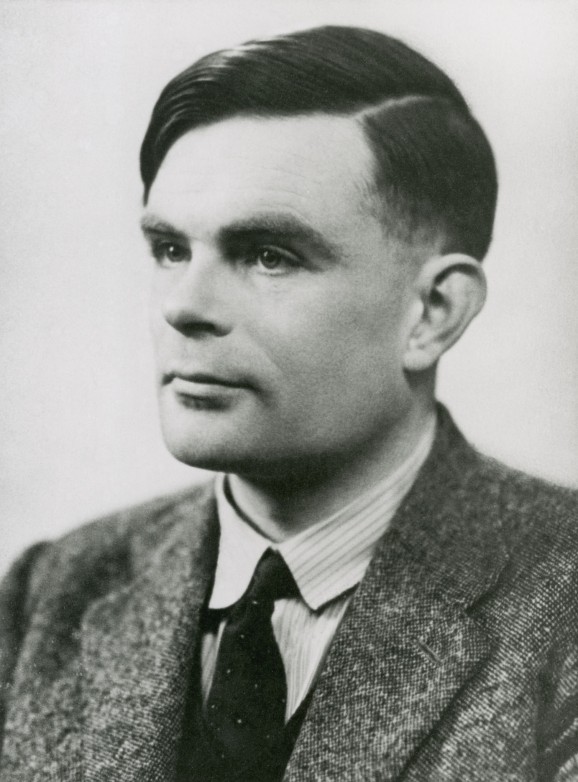Today Is The 60th Anniversary Of Alan Turing’s Death
This article is more than 2 years old
 Most people know of Alan Turing as the inventor of the Turing Test, which he devised in 1950 to test a machine’s intelligence. The Turing test is really a test of a computer’s ability to “converse” like a human — the test consisted of a human essentially instant messaging or text chatting with either another human or a machine in another room. If, during the course of that text conversation, the human believed he was chatting with a human but was actually chatting with the machine, the machine has passed the test. These days, there’s a modern iteration of the Turing Test called the Loebner Prize, which, in addition to offering a grand prize of $100,000 for a computer who can effectively trick the judges into thinking it’s human (which no one has ever won — the competition will end when this happens), it offers a prize for the most human computer and the most human human. It can be said that the test doesn’t measure intelligence as much as it measures a computer’s ability (or a programmer’s ability) to mimic human speech, typos, inanities, curse words, slang, and all. I could go on about the Turing Test forever, but on the 60th anniversary of Alan Turing’s death, I wanted to explore some of the other details of his life, and the controversy surrounding his death.
Most people know of Alan Turing as the inventor of the Turing Test, which he devised in 1950 to test a machine’s intelligence. The Turing test is really a test of a computer’s ability to “converse” like a human — the test consisted of a human essentially instant messaging or text chatting with either another human or a machine in another room. If, during the course of that text conversation, the human believed he was chatting with a human but was actually chatting with the machine, the machine has passed the test. These days, there’s a modern iteration of the Turing Test called the Loebner Prize, which, in addition to offering a grand prize of $100,000 for a computer who can effectively trick the judges into thinking it’s human (which no one has ever won — the competition will end when this happens), it offers a prize for the most human computer and the most human human. It can be said that the test doesn’t measure intelligence as much as it measures a computer’s ability (or a programmer’s ability) to mimic human speech, typos, inanities, curse words, slang, and all. I could go on about the Turing Test forever, but on the 60th anniversary of Alan Turing’s death, I wanted to explore some of the other details of his life, and the controversy surrounding his death.
Alan Turing was put on trial two years after developing the Turing Test. Police learned that Turing was sexually involved with a man from Manchester — they actually went to Turing’s house to investigate a burglary, and found his lover there. They arrested him for that “crime.” This is where Turing further distinguishes himself from the pack. Instead of denying the relationship or defending himself, he stated that he had done nothing wrong, which, in Manchester at the time, was a ballsy move. He had the choice of going to prison or receiving estrogen injections for a year to diminish his sex drive. He chose the latter. And he kept working, pursuing quantum physics and the Fibonacci sequence, among others. But his homosexuality continued to haunt him, not just personally but professionally. He worked for the Government Communications Headquarters as a code breaker — he was instrumental in helping to defeat the Nazis in World War II — but was denied security clearance because of his sexual orientation.
On June 8, 1954, Turing’s house cleaner found him dead, next to a half-eaten apple. He had been dead for a day, the result of cyanide poisoning. It was generally accepted that Turing committed suicide, though recently, Turing scholars have cast doubt on that conclusion, suggesting, as Turing’s mother did, that his death was really an accident, probably due to cyanide residue left on his fingers after an experiment. Or perhaps he accidentally inhaled cyanide vapor while performing some chemistry experiments.
Those who believe he committed suicide say that Turing was inspired by the poisoned apple in “Snow White and the Seven Dwarfs,” and that he sought that method of suicide to finally escape persecution and suffering. But scholars say that Turing ate an apple before bed every night, often not finishing it. And it turns out that the police didn’t test the apple for cyanide, and friends of Turing reported his mood to be cheerful in the days before his death.
Given the relative shoddiness of the investigation, it’s probably impossible to determine what actually happened to Turing. Regardless, the man wasn’t as widely appreciated during his life as he could or should have been. British Prime Minister Gordon Brown officially and publicly apologized for the British government’s treatment of Turing, and the Queen pardoned him in 2013.












